Caldwell (C)
- Homepage
- Gallery
- Catalog images
- Caldwell (C)
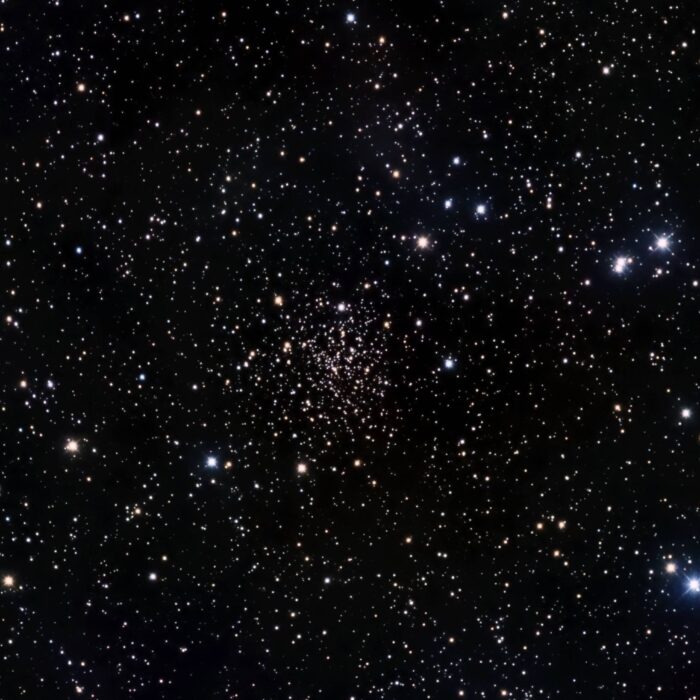
Is located close to Polaris.


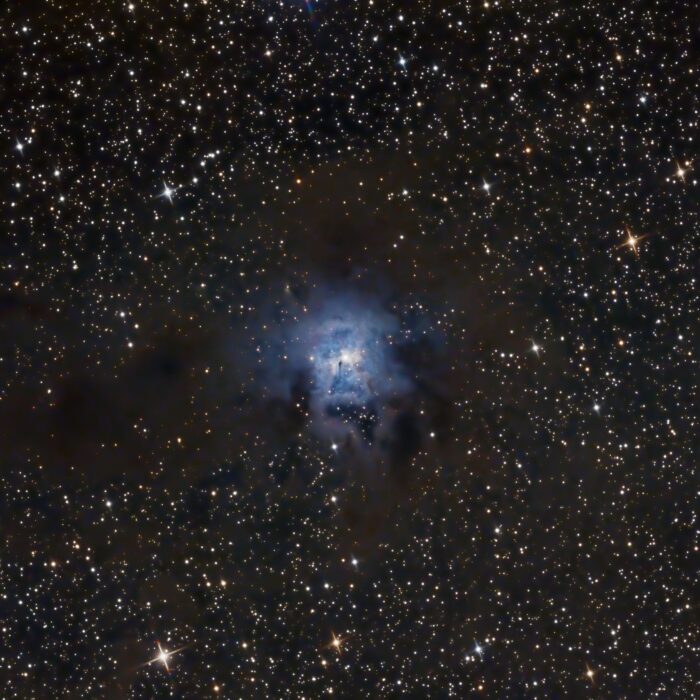
KeithSteffens, CC BY-SA 4.0, via Wikimedia Commons


On the left the small galaxy is NGC 6552.
On the right the bright section in the Cat's Eye nebula (C6, NGC 6543) is IC 4677.


The dark cloud next to it is LDN 1325.

The bright nebula at the top is C9 (Sh2-155).
The dark nebula to the left is LDN 1216, the dark area to the right is LDN 1218.
Just below the dark nebula by the two stars is the blue reflection nebula vdB 155.
The emission nebula at the lower edge is Sh2-154.

Hewholooks, CC BY-SA 3.0, via Wikimedia Commons

On the far left is M52.
Right below is the star cluster Czernik 43.
In the upper right is the Bubble Nebula NGC 7635.

Yu-Hang Kuo, CC BY-SA 2.0, via Wikimedia Commons
The star cluster on the lower right is NGC 6939.
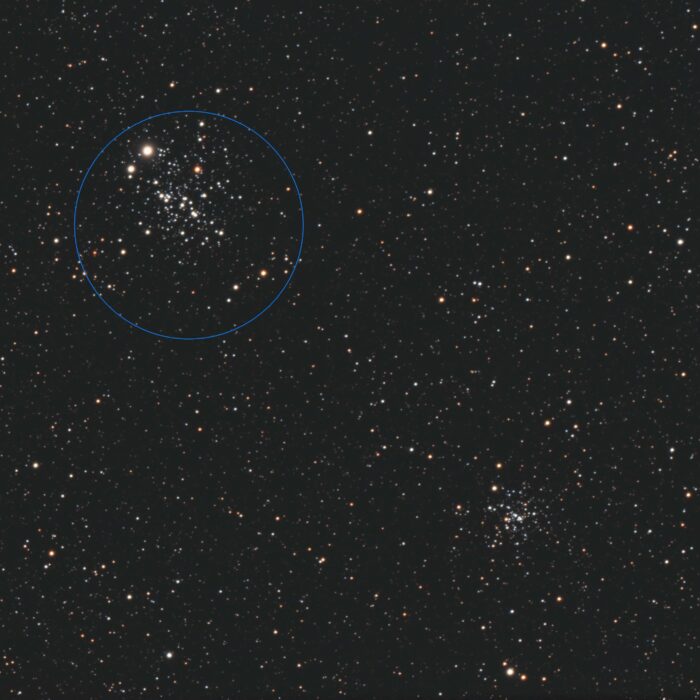
The star cluster on the upper left is C13 (NGC 457).
Bottom right is NGC 436.

The right star cluster is NGC 869, the left one is NGC 884.

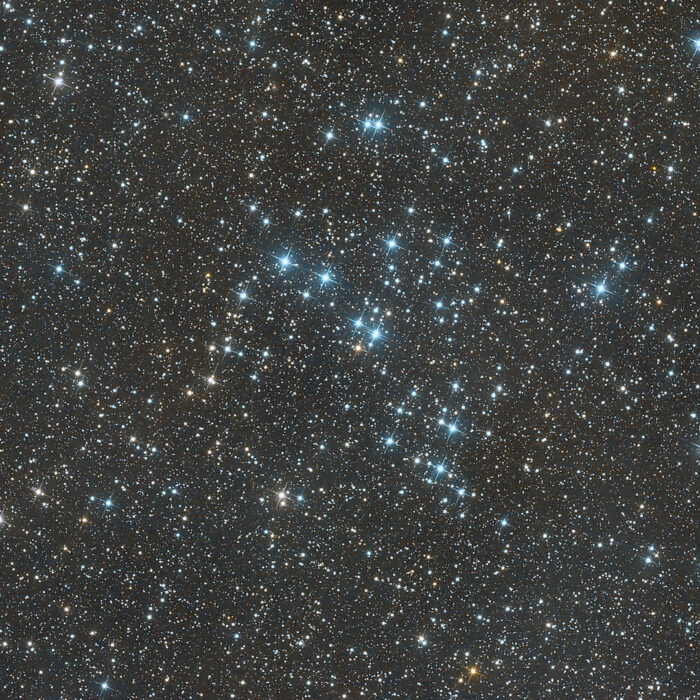



The nebula in the center of the image is the Cocoon Nebula (C19, IC 5146).
The reflection nebula to the right is vdB 147.

The bright nebula at the top is the Pelican Nebula IC 5070.
To the right is the emission nebula IC 5068.
Bottom left the large nebula is the North American Nebula NGC 7000.
The three nebulae form the nebular region Sh2-117.
The dark nebula between IC 5070 and NGC 7000 is LDN 935.
The dark nebula on the far right is LDN 914.



Hewholooks, CC BY-SA 3.0, via Wikimedia Commons

Marie-Lou Gendron-Marsolais (Université de Montréal), Julie Hlavacek-Larrondo (Université de Montréal), Maxime Pivin Lapointe, CC BY 4.0, via Wikimedia Commons



Obliquely in the upper left corner above the Crescent Nebula at the edge of the Big Red Nebula, the Soap Bubble Nebula PN G75.5+1.7, discovered in 2008, can be seen very faintly.
In the upper left corner the nebula Do 4 can be seen.
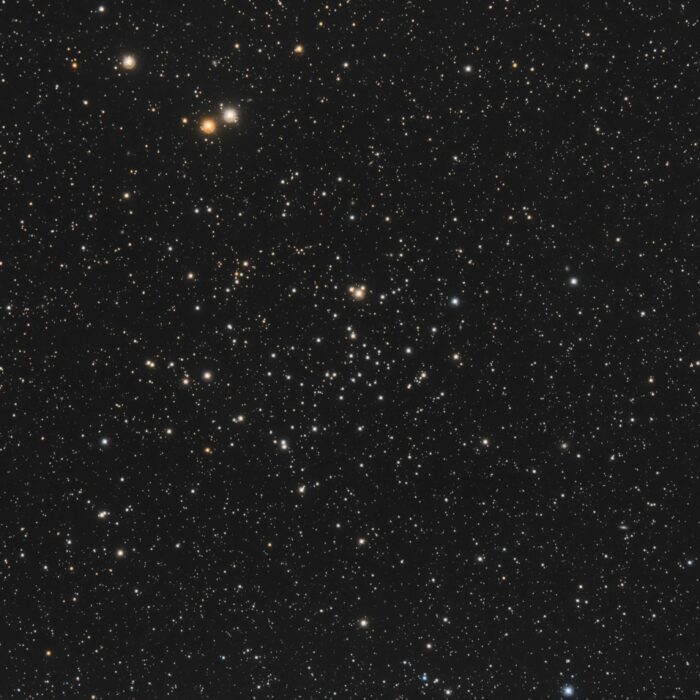

On the left is the galaxy NGC 5033.
On the right is NGC 5005 (C29).
At the very bottom at the edge the galaxy NGC 5002 is just visible.

This group of 5 galaxies is called Deer Lick Group.
Diagonally to the lower left comes NGC 7335.
To the left the small galaxy is NGC 7336.
Vertically below NGC 7331 is the small galaxy NGC 7337.
Centered at the lower left edge is NGC 7340.

On the right the bright nebular section is IC 405 with the reflection nebula vdB 34.
Below is IC 410 with the embedded open cluster NGC 1893.
At the lower left end is very faintly visible vdB 39.
Left center the larger nebula is IC 417 and left beside it the small nebula is NGC 1931 (Fly Nebula). Together with the rest of the nebulae they form the large nebula area Sh2-230.
In the upper left corner you can still see M38.
Directly below the small star cluster is NGC 1907.
Between IC 405 and IC 410 is Melotte 31.
Melotte 31 consists of the six adjacent stars (18 Aur - upper right, 19 Aur - upper left, 17 Aur - center right, IQ Aur - center left, 16 Aur - bottom) and the stars in between. Harrington added the star 14 Auriga (at the lower edge of the image) and called the structure a Lacrosse racket (Harrington 4).

Above is the galaxy NGC 4631 (C32).
The small galaxy above is NGC 4627.
Together they form the galaxy pair Arp 281.
Bottom left is the galaxy NGC 4656.

The left section is NGC 6992 and just before the flare is NGC 6995. Together they are called the Network Nebula.
The flare is IC 1340.

The bright star is 52 Cygni.

To the right is NGC 4874.
Left diagonally below at the edge is NGC 4921.



In the center is NGC 4565.
The small galaxy in the lower left is NGC 4562.


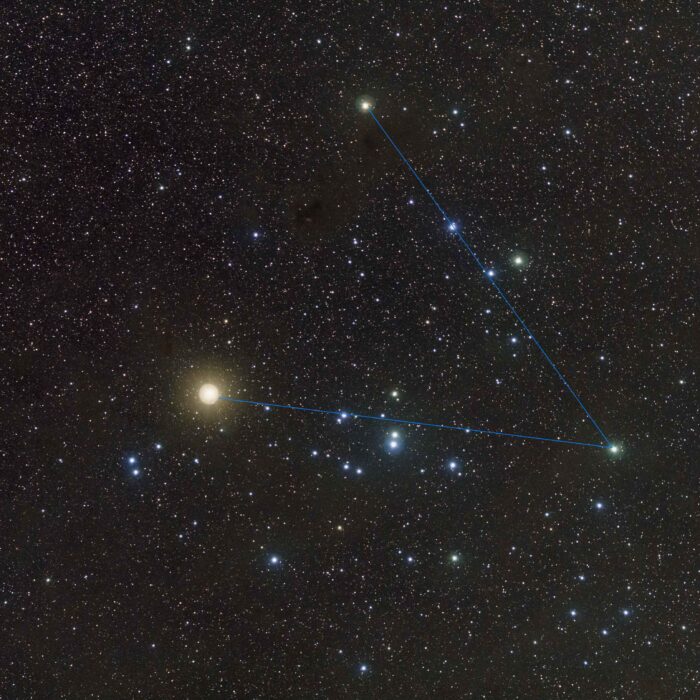
The bright star is Aldebran.
Top left is the star cluster NGC 1647 (Mel 26).


Hewholooks, CC BY-SA 3.0, via Wikimedia Commons

Jschulman555, CC BY 3.0, via Wikimedia Commons


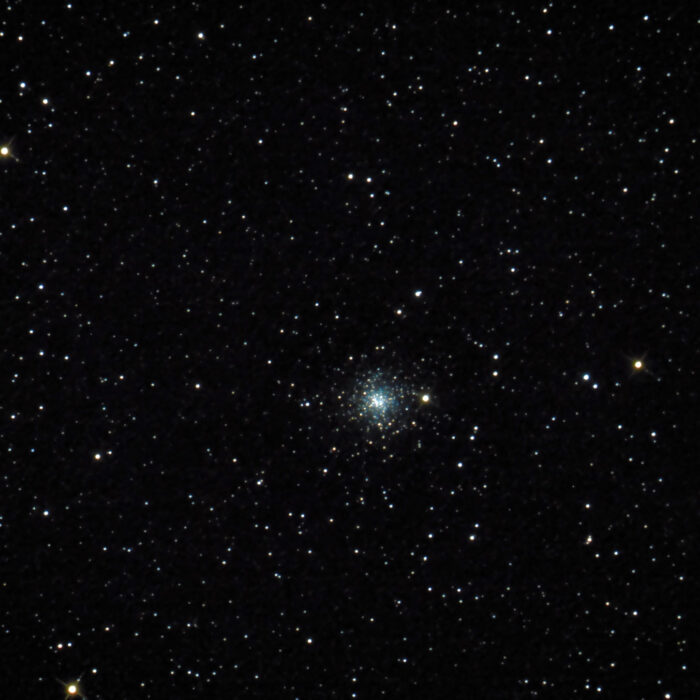

Adam Block/Mount Lemmon SkyCenter/University of Arizona, CC BY-SA 3.0 US, via Wikimedia Commons

The star cluster in the center of the Rosette Nebula (C49, Sh2-275) is NGC 2244.
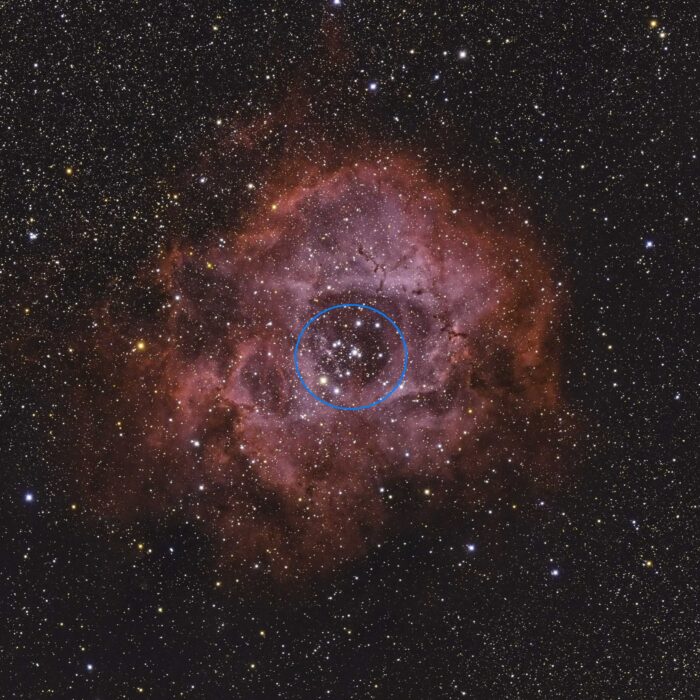
The star cluster in the center of the Rosette Nebula (C49, Sh2-275) is NGC 2244.


Copyright by WikiSky.org, WikiSky's snapshot tool

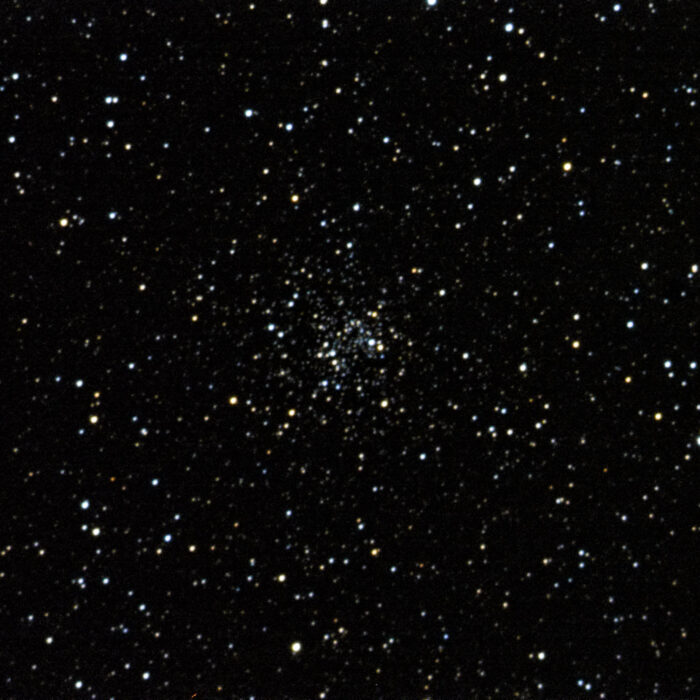


On the left edge the galaxy NGC 255 is still visible.

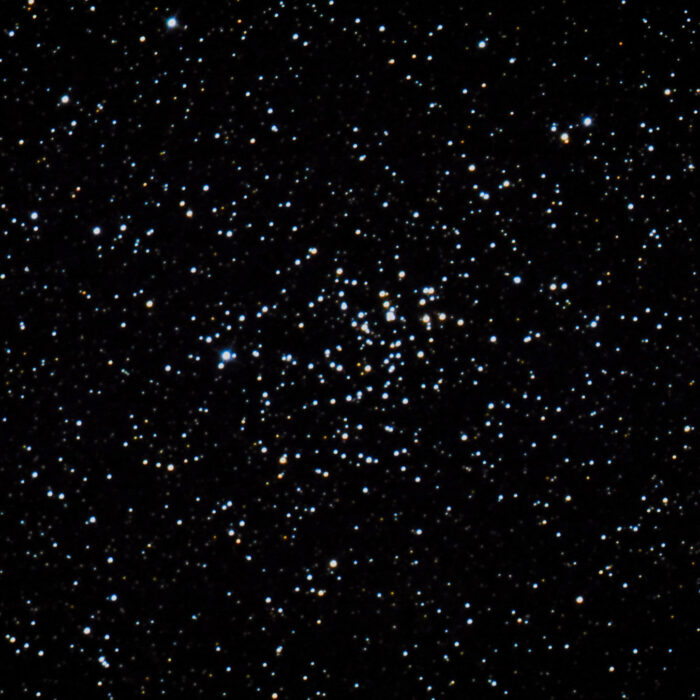


The lower galaxy is NGC 4038 (C60), the upper one is NGC 4039 (C61).

The lower galaxy is NGC 4038 (C60), the upper one is NGC 4039 (C61).


Stephen Rahn from Macon, GA, USA, CC0, via Wikimedia Commons
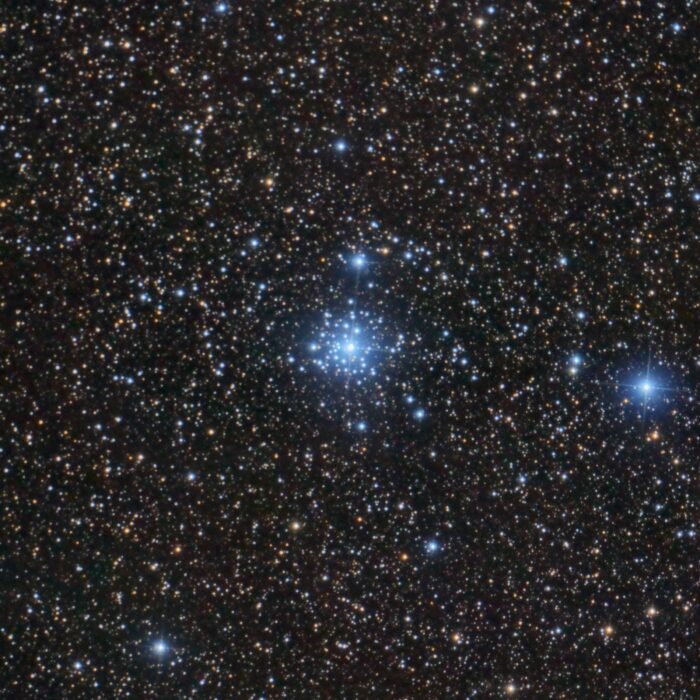

In the upper left is the star cluster NGC 288.
In the center is NGC 253 (C65).

Judy Schmidt, CC BY 2.0, via Wikimedia Commons

The small white dot in the right spiral arm is NGC 1097A.

The star cluster on the upper right is NGC 6723 (Candelabra cluster).
In the center of the image to the left of the two large reflection nebulae is C68.
The upper blue reflection nebula is NGC 6726.
The lower blue reflection nebula is IC 4812.
The blue star to the right is Epsilon Coronae Australis and the blue star to the far left is Gamma Coronae Australis. They belong to the zodiacal sign southern crown.
The blue star far right is V686 Coronae Australis.

This Sharpless object has been removed from the BFS catalog (updated Sh2 catalog) for HII nebulae.

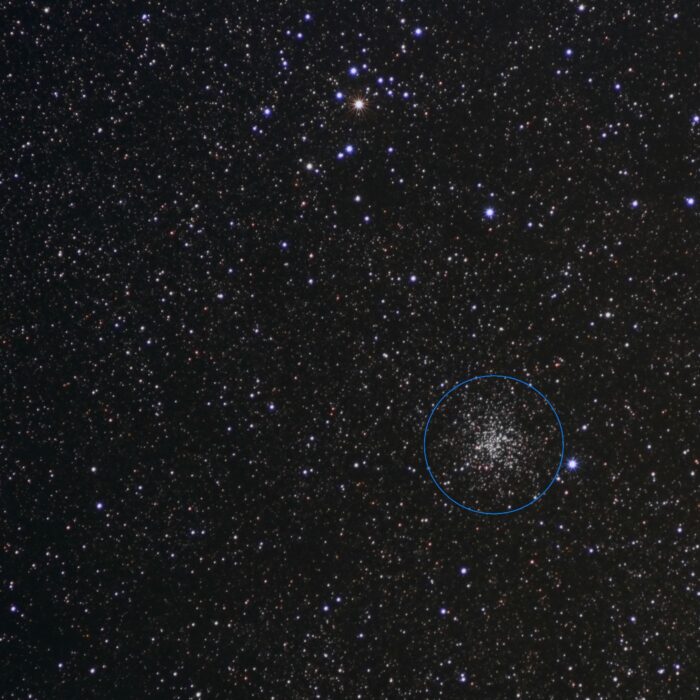
Above is the open cluster NGC 2451 below is the star cluster C71 (NGC 2477).
The bright star to the right of NGC 2477 is HD 64503.

The left somewhat elongated part is cataloged under IC 1537.
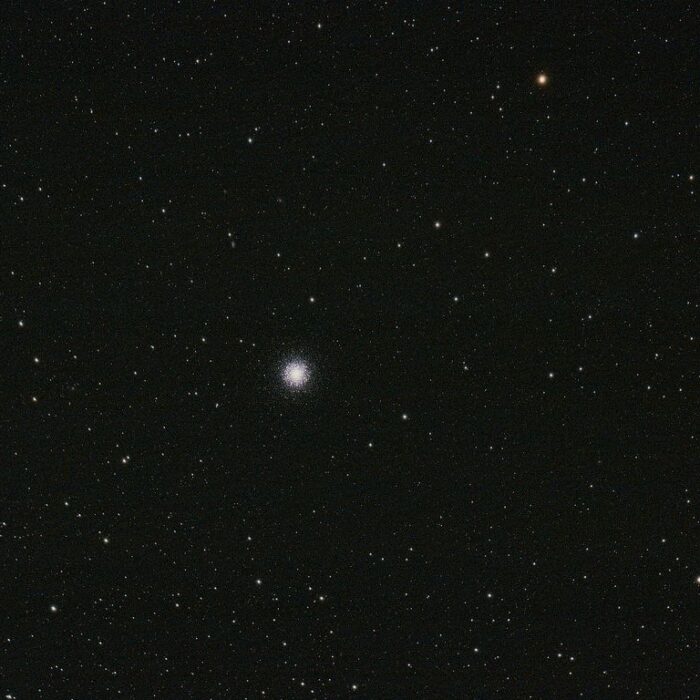

Adam Block/Mount Lemmon SkyCenter/University of Arizona, CC BY-SA 4.0, via Wikimedia Commons
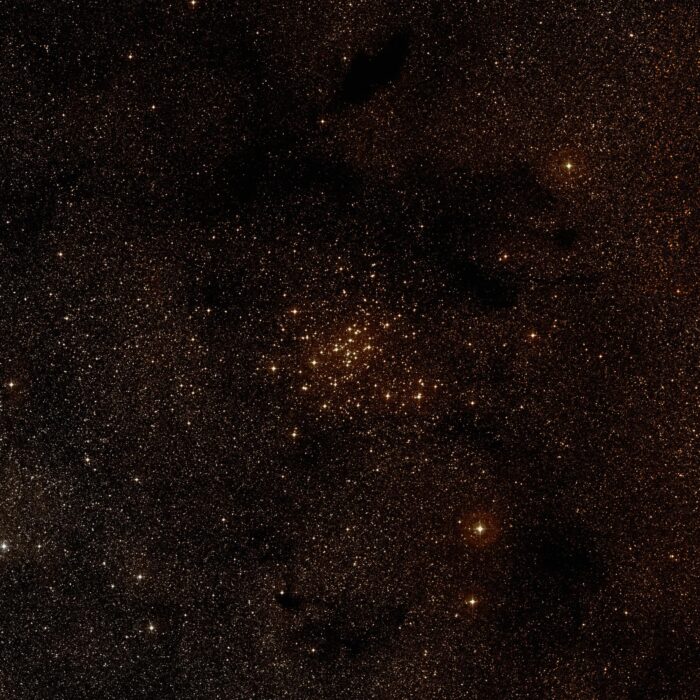
Copyright by WikiSky.org, WikiSky's snapshot tool
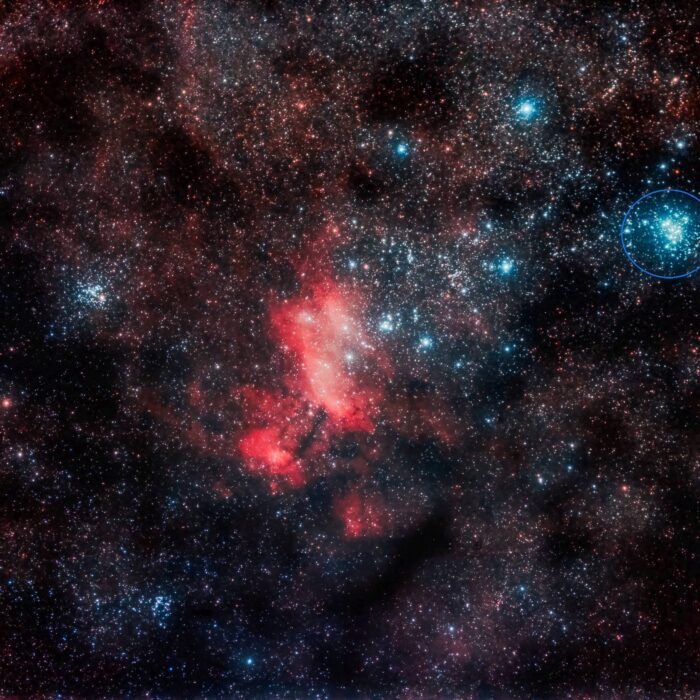
In the center is the Prawn Nebula IC 4628.
On the right is the star cluster NGC 6231 (C76).
Between the two objects above is the blue giant star HD 151804 (NGC 6227).
To the left of the nebula is the star cluster NGC 6242.
At the lower left is the star cluster NGC 6268.

Dylan O' Donnell, deography.com, CC0, via Wikimedia Commons

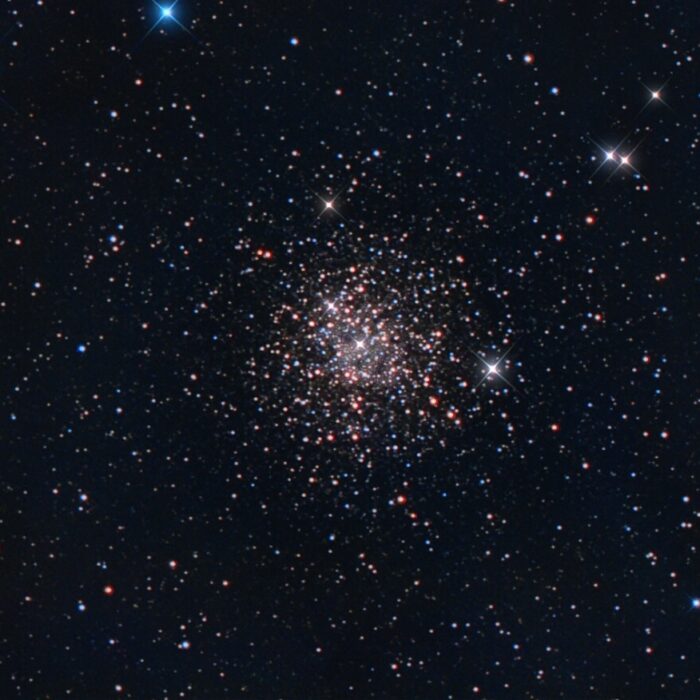
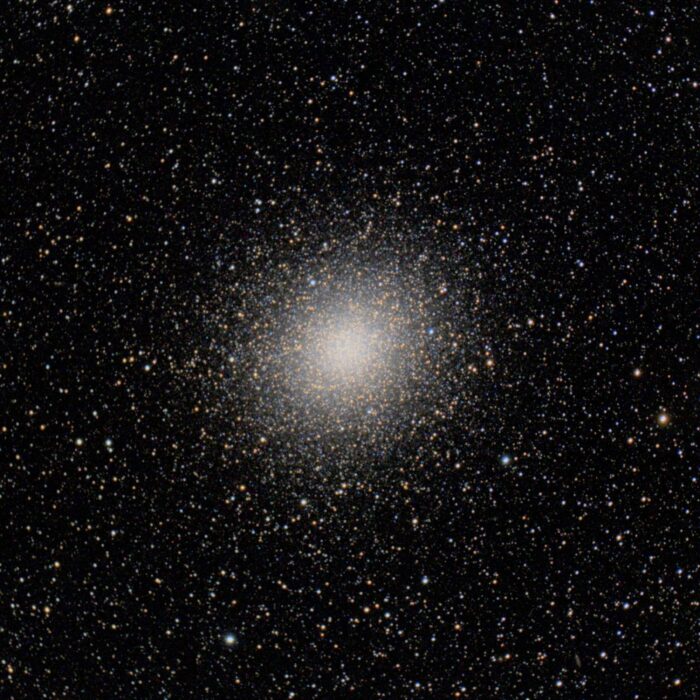
Jose Mtanous, CC BY-SA 3.0, via Wikimedia Commons
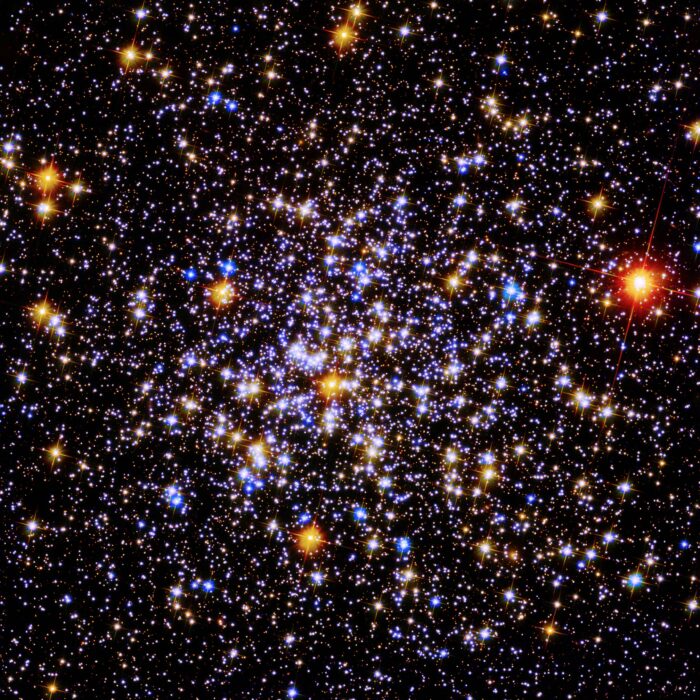
NASA Hubble Space Telescope, CC BY 2.0, via Wikimedia Commons

Dylan O'Donnell, deography.com, CC0, via Wikimedia Commons
The nebula is NGC 6188.
The bright star cluster in the center is NGC 6193.
At the very bottom of the image you can still see the foothills of NGC 6164.

On the left the large galaxy is C83 (NGC 4945).
On the right edge of the image is NGC 4976.
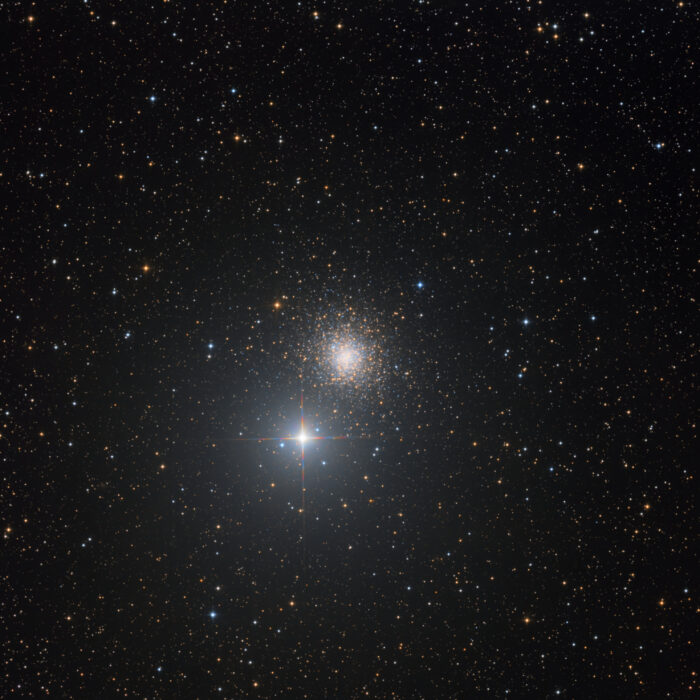
The bright star next to it is HD 119834.

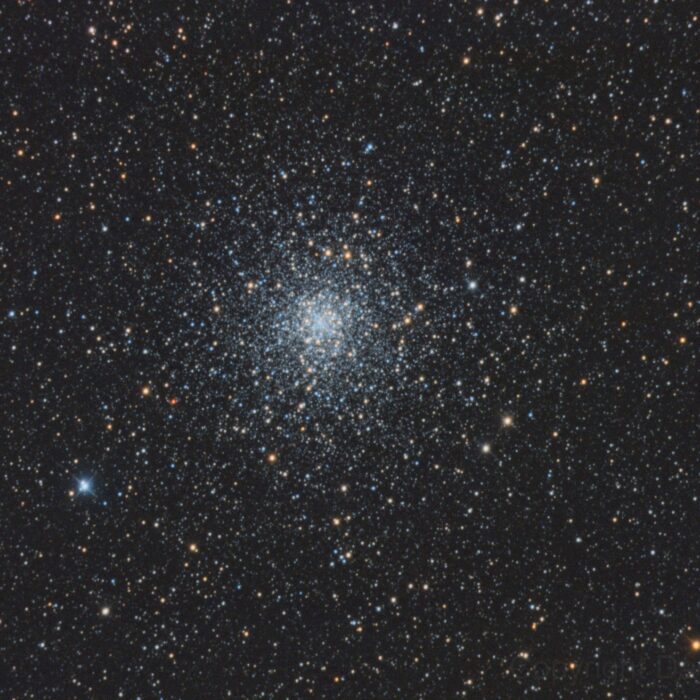
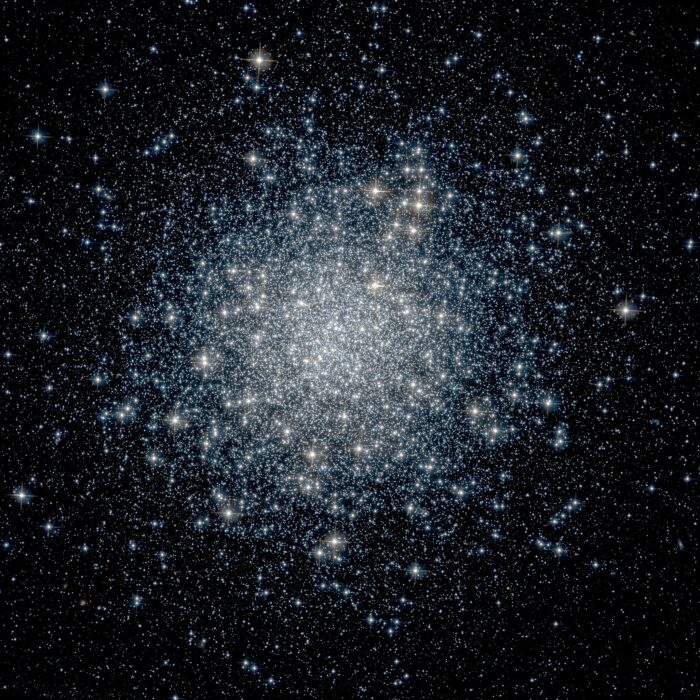
Lithopsian, CC BY-SA 4.0, via Wikimedia Commons

Roberto Mura, CC BY-SA 3.0, via Wikimedia Commons
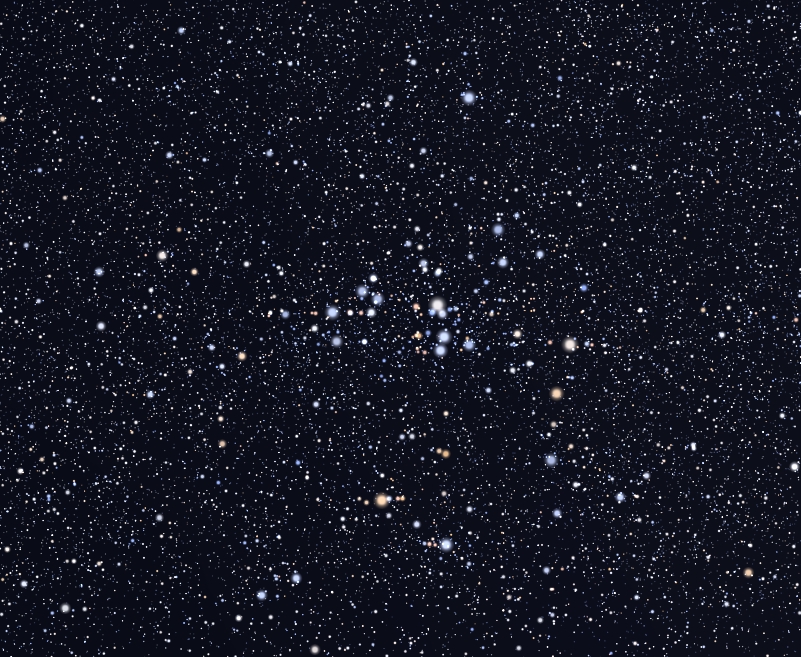
Roberto Mura, CC BY-SA 3.0, via Wikimedia Commons

Judy Schmidt, CC BY 2.0, via Wikimedia Commons
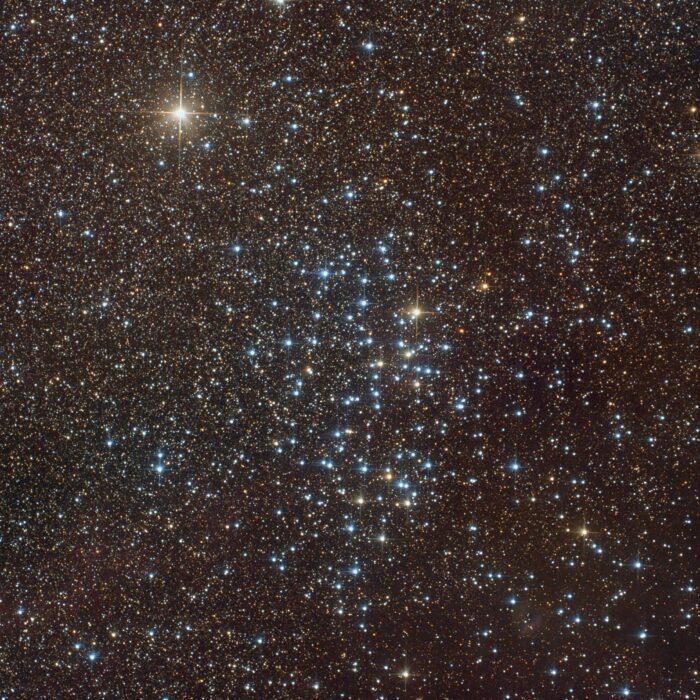
A section of NGC 3532 was the target for first light from the Hubble Space Telescope.

The small nebula in the upper right is NGC 3324 with IC 2599, collectively called the Gabriela Mistral Nebula.
The bright star in the center is Eta Carinae around which is the Homunculus Nebula (to the right of Eta Carinae is the Keyhole Nebula and directly next to it is the nebula "Defiant Finger" / "God's Birdie" / "The Finger of God".
Above NGC 3372 is RCW 52.
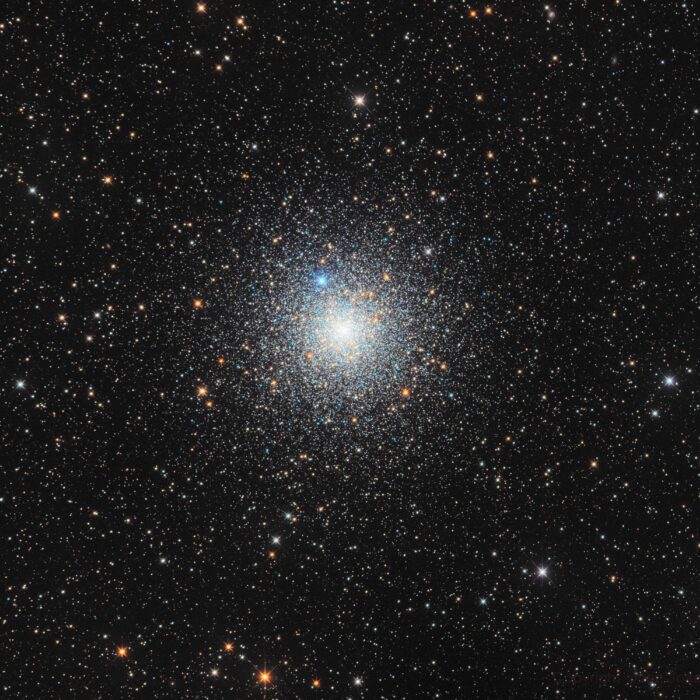
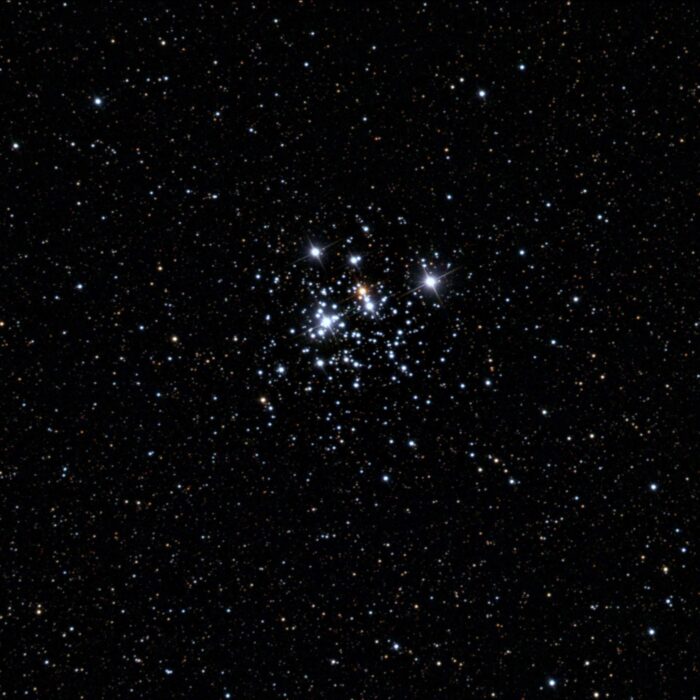
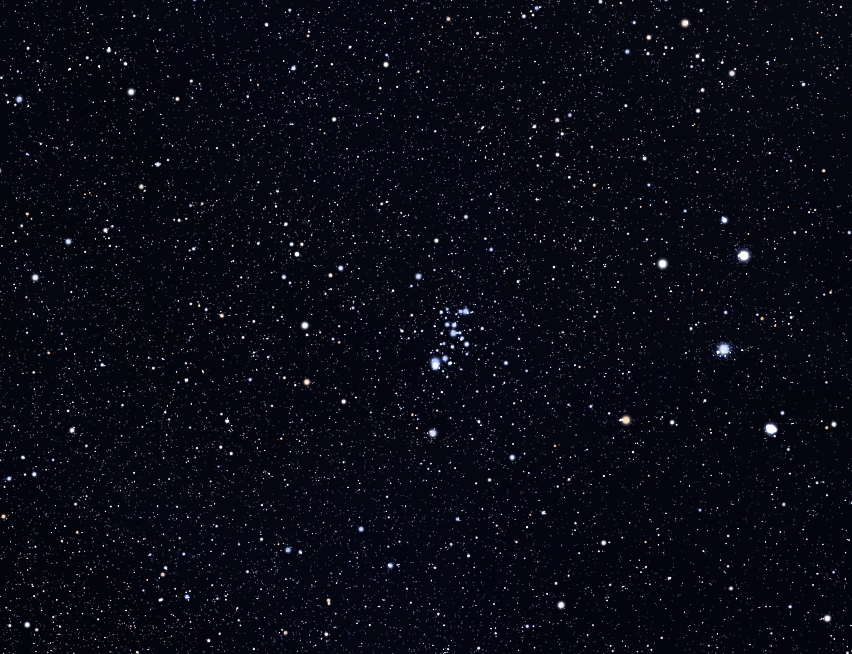
Roberto Mura, CC BY-SA 4.0, via Wikimedia Commons
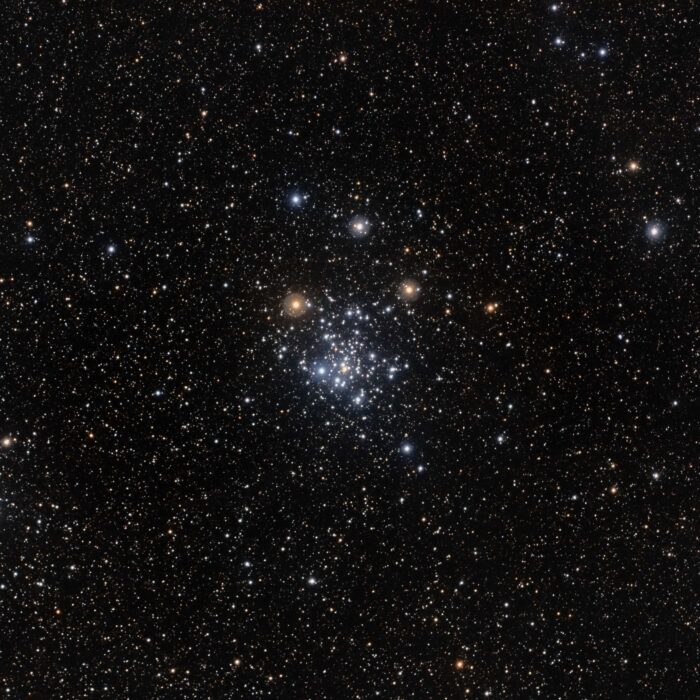
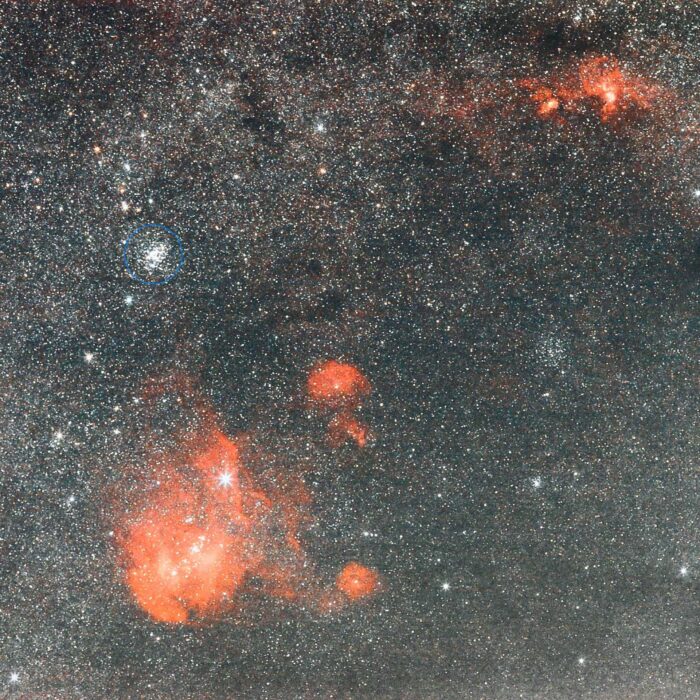
The upper part of the large nebula is IC 2944 (Running Chicken Nebula) with the embedded star cluster.
Diagonally left below is the emission nebula IC 2948.
The very bright star is Lambda Centauri.
Top right of IC 2944 is Gum 39 (Ced 116).
Directly below is IC 2872.
Bottom right is Gum 41 (RCW 61).
In the upper right are the nebulae NGC 3603 and NGC 3576.

Directly at the dark cloud is Crux.
To the lower right are the emission nebulae IC 2948 and IC 2872 and above them the bright spot is the star cluster NGC 3766.
Directly left of the left star is the star cluster NGC 4852 and below this the bright point is the star cluster NGC 4755 (C94).
In the middle of the coal sack is the star cluster NGC 4609 (C98).
Above the lowest star is the star cluster NGC 4349.
Between the lowermost star and the emission nebulae is star cluster NGC 4052 and above it is star cluster NGC 4103.

Just off the dark cloud is Crux.
To the lower right are emission nebulae IC 2948 and IC 2872 and above them the bright spot is star cluster NGC 3766.
Directly left of the left star is the Star cluster NGC 4852 and below this the bright point is the star cluster NGC 4755 (C94).
In the middle of the coal sack is the star cluster NGC 4609 (C98).
Above the lowest star is the star cluster NGC 4349.
Between the lowest star and the emission nebulae is star cluster NGC 4052 and above it is Star cluster NGC 4103.

The upper part from the big nebula is IC 2944 (Running Chicken Nebula) with the embedded star cluster .
Diagonally to the left below is the emission nebula IC 2948.
The very bright star is Lambda Centauri.
Top right of IC 2944 is Gum 39 (Ced 116).
Directly below is IC 2872.
Bottom right is Gum 41 (RCW 61).
In the upper right are the nebulae NGC 3603 and NGC 3576.

NGC 6744 has an irregular companion galaxy designated NGC 6744A (upper left arm lying across the spiral).

The bright star cluster is IC 2602 (C102).
To the left of the lower bright star is the star cluster Mel 101.

In the center is the Tarantula Nebula NGC 2070 and above it is the Star cluster NGC 2044 above which in turn is the supernova SN 1987A. To the left is star cluster NGC 2042, and to the right is star cluster NGC 2050.
Diagonally to the upper right, the bright nebula, is the small emission nebula NGC 2048.
Below the Tarantula Nebula, the white dot, is the star cluster NGC 2100.
To the right of the Tarantula Nebula is the emission nebula NGC 2074 and directly below it, in the black hole, is the open star cluster NGC 2081 surrounded by nebulae.
Next to it the second of the three clouds is a collection of the emission nebulae NGC 2077, NGC 2080, NGC 2085, NGC 2086 and IC 2145 and to the right of it, the third cloud is a collection of the emission nebulae NGC 2078, NGC 2079, NGC 2083, NGC 2084 and NGC 2084e.
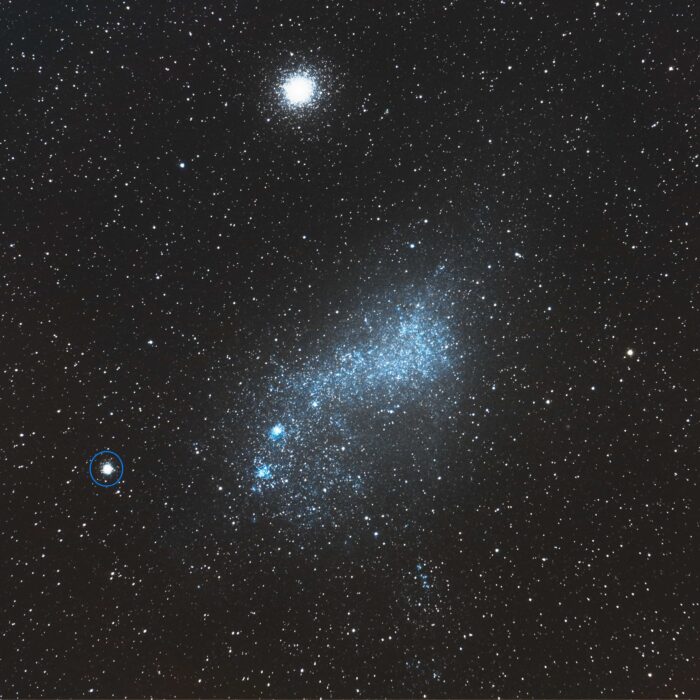
Martin Bernardi, CC BY-SA 4.0, via Wikimedia Commons
The cloud is the small Magellanic cloud NGC 292.
The globular cluster above is NGC 104 (47 Tucanae).
The globular cluster to the left is NGC 362 (C104).
In the cloud there is also NGC 346 (upper big blue spot) and NGC 371 (lower blue spot).
The star cluster NGC 371 is surrounded by the emission nebula N76A.
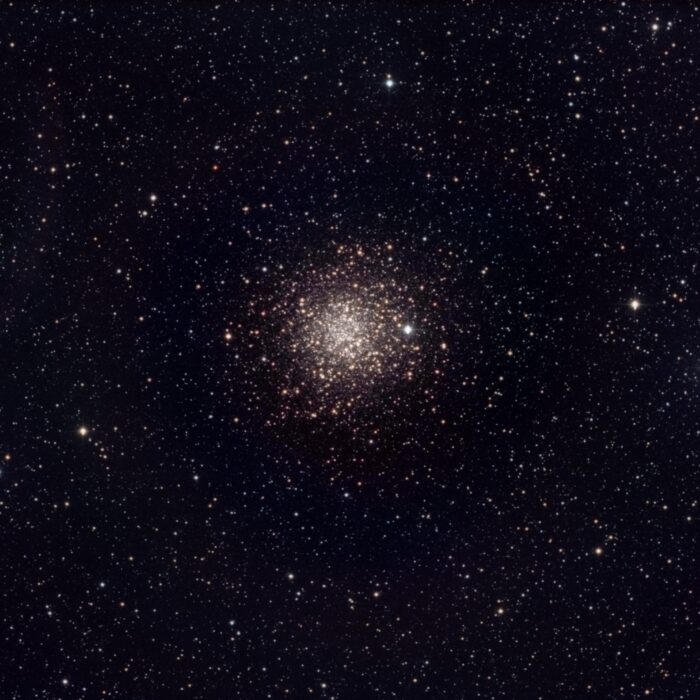
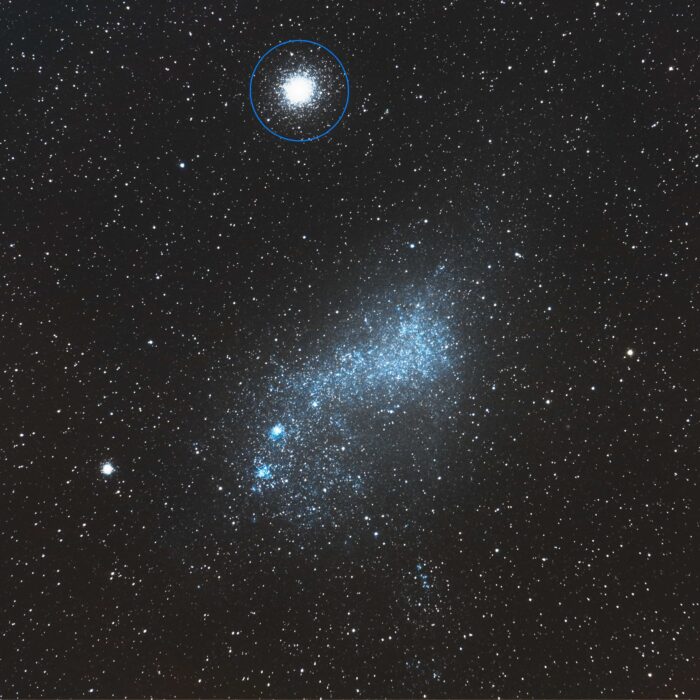
Martin Bernardi, CC BY-SA 4.0, via Wikimedia Commons
The cloud is the small Magellanic Cloud NGC 292.
The globular cluster above is NGC 104 (47 Tucanae).
The spherical cluster on the left is NGC 362 (C104).
In the cloud there is also NGC 346 (upper big blue spot) and NGC 371 (lower blue spot).
The star cluster NGC 371 is surrounded by the emission nebula N76A.
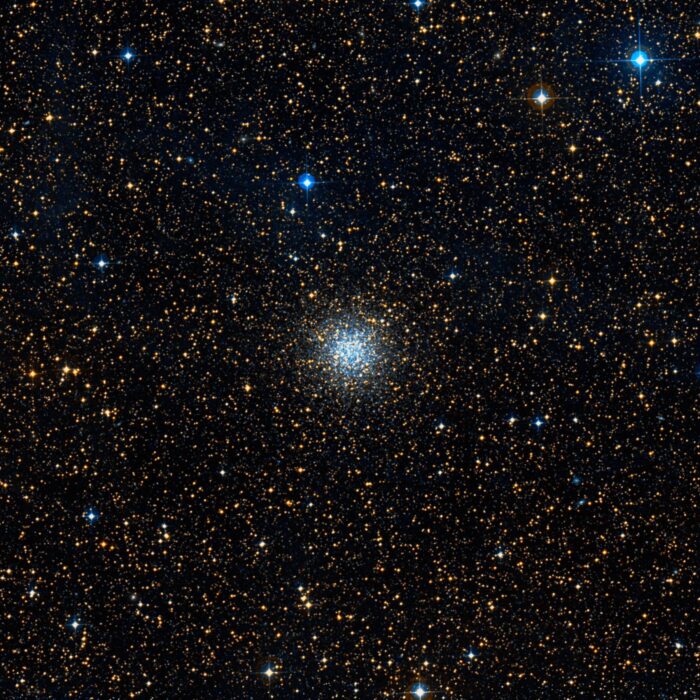
Copyright by WikiSky.org, WikiSky's snapshot tool
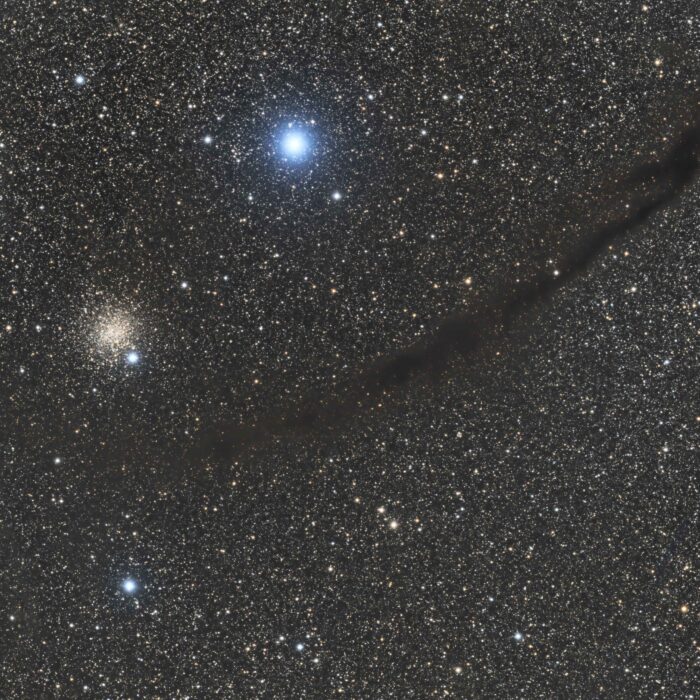
The bright star is Gamma Muscae.
The dark cloud is the Dark Doodad Nebula.
